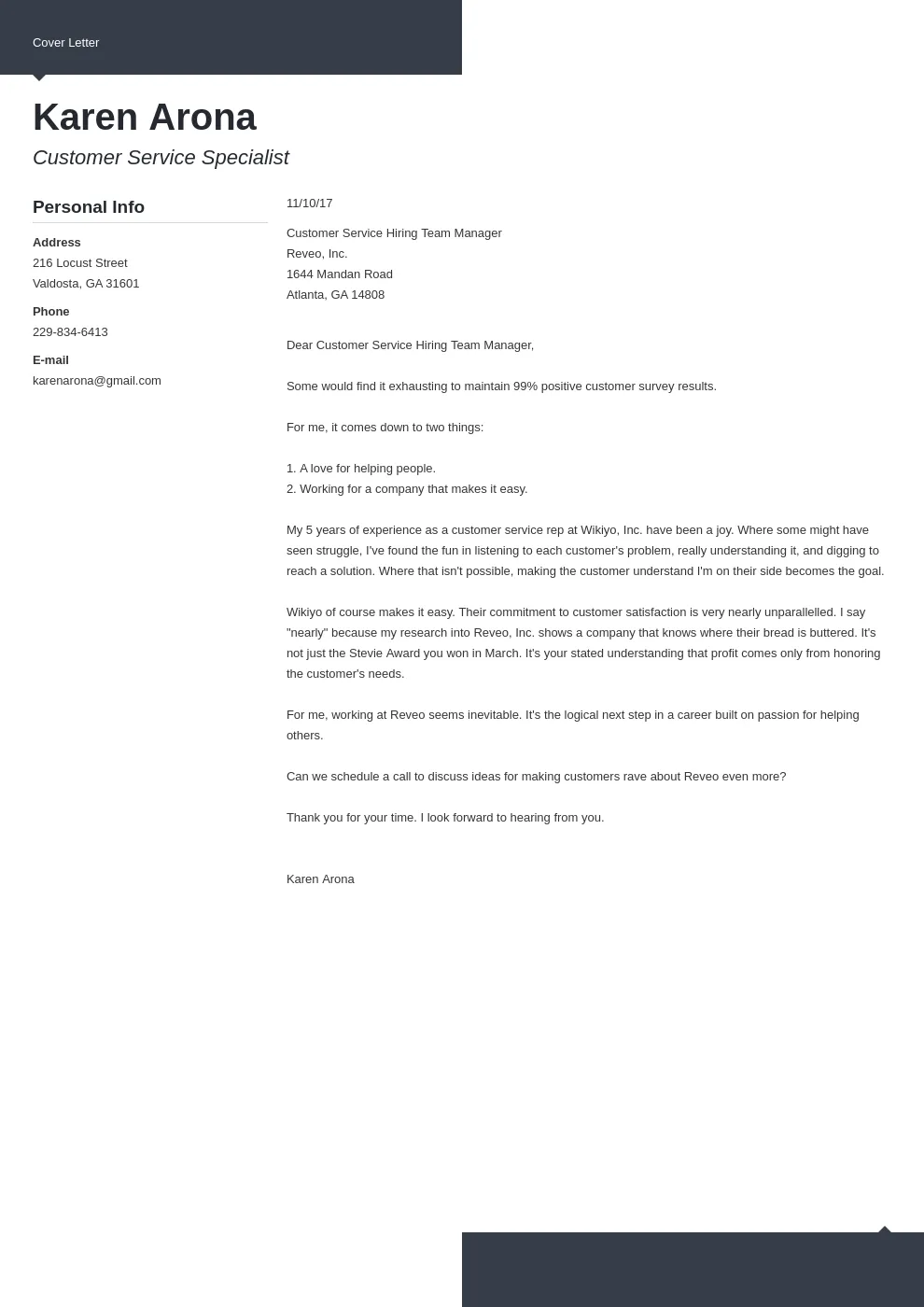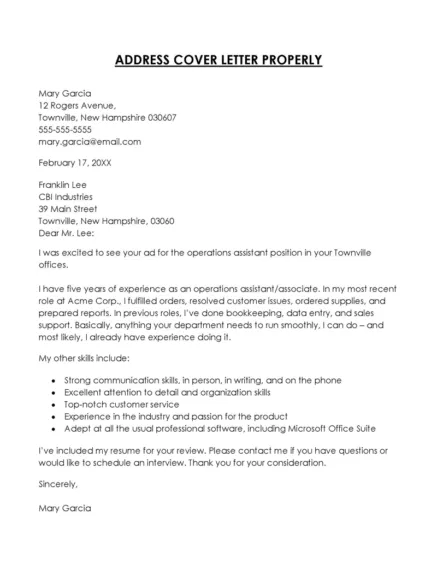Understanding the Importance of a Cover Letter Addressee
The addressee on your cover letter is more important than you might think. It sets the tone for your entire application and can significantly impact how the hiring manager perceives you. Addressing your cover letter correctly demonstrates professionalism, attention to detail, and a genuine interest in the specific opportunity. It shows that you’ve taken the time to research the company and tailor your application accordingly. Failing to address your cover letter appropriately can make your application seem generic and impersonal, potentially leading to it being overlooked in favor of applications that show more effort and personalization. In today’s competitive job market, every detail matters, and the addressee is no exception.
Why Addressing Your Cover Letter Matters
Addressing your cover letter correctly goes beyond mere formality; it showcases your respect for the hiring process and the organization. It demonstrates your ability to follow instructions, a critical skill in any professional setting. Moreover, it helps build a personal connection with the hiring manager from the outset. When you address your cover letter to a specific person, it becomes less of a generic document and more of a direct communication. This personal touch can make your application stand out, increasing the likelihood that your qualifications will be carefully considered. Addressing your cover letter is essentially your first chance to make a positive impression, signaling that you’re serious about the role and the company.
Directly Addressing the Hiring Manager

Whenever possible, address your cover letter directly to the hiring manager or the person responsible for reviewing applications for the specific position. This shows that you’ve done your homework and are committed to tailoring your application. Starting your cover letter with ‘Dear Mr./Ms. [Last Name]’ immediately establishes a connection and demonstrates a level of professionalism. By addressing the hiring manager directly, you’re acknowledging their role and showing that you value their time and expertise. This personalized approach can help your application stand out in a stack of generic submissions and signals your genuine interest in the opportunity. Always use the correct title and spelling of the person’s name to show respect and attention to detail.
Finding the Hiring Manager’s Name
Locating the hiring manager’s name may require some effort, but the payoff is well worth it. Start by carefully reviewing the job posting itself; sometimes, the name of the hiring manager or the contact person is included. If the posting doesn’t explicitly list a name, explore other avenues to find this crucial information. Remember, taking the initiative to find the correct contact person demonstrates your strong interest in the position and your ability to go the extra mile.
Checking the Company Website
The company’s website can be a valuable resource for identifying the hiring manager. Navigate to the ‘About Us’ or ‘Contact Us’ sections of the website. Look for a section that lists team members or provides contact information for specific departments or roles. You might find the name of the hiring manager or the relevant department head. If you find a general contact email, you can use it to inquire about the appropriate person to address your cover letter to. This approach shows your proactiveness and initiative.
Using LinkedIn to Identify the Hiring Manager

LinkedIn is an excellent platform for discovering the hiring manager’s name. Search for the company on LinkedIn and navigate to the ‘People’ section. Use the job title associated with the position you’re applying for to narrow your search. Look for individuals with the title ‘Hiring Manager,’ ‘Recruiter,’ or a similar designation. Once you’ve identified potential candidates, review their profiles to confirm their relevance to the position. Sending a brief, personalized message to connect with the person can also be a great way to introduce yourself. This approach not only provides valuable information but also shows your proactive networking skills.
When the Hiring Manager’s Name is Unavailable
There will be times when you’re unable to find the hiring manager’s name. In these situations, it’s crucial to choose an appropriate alternative rather than resorting to a generic salutation. The goal is to maintain a professional tone while still demonstrating your attention to detail. Consider using a general title or the name of the department to which you are applying. This approach is more personalized than a generic greeting and shows that you understand the company’s structure. Remember to always err on the side of professionalism and avoid vague or impersonal greetings.
Alternatives to ‘To Whom It May Concern’
Avoid using ‘To Whom It May Concern,’ as it’s impersonal and outdated. Instead, consider the following alternatives to personalize your cover letter. Use ‘Dear Hiring Manager’ if you cannot find a specific name. If you know the department, use ‘Dear [Department Name] Hiring Team.’ This addresses your application to the relevant group. You can also use ‘Dear [Job Title]’. If you’re certain the person reviewing applications holds that title. These options demonstrate that you have made an effort to address the letter to the appropriate people and signals your attention to detail. Be sure to research the company and job posting thoroughly before making your decision.
Addressing a Cover Letter to a Specific Department

If you can’t identify the hiring manager’s name but know the department you’re applying to, addressing your cover letter to the department is a better alternative to a generic greeting. For example, you might use ‘Dear Human Resources Department’ or ‘Dear Marketing Team.’ This shows you’re aware of the company’s structure and are directing your application to the relevant team. When using this approach, ensure that you’ve correctly identified the department responsible for the role. This adds a personal touch, signaling that you’re serious about the position and the company.
Formatting Your Cover Letter Address
The way you format your cover letter address matters, as it contributes to the overall professionalism of your application. Always align the address to the left margin, and include the hiring manager’s full name, title, and the company’s address. If you’re sending an email, you can use the hiring manager’s name in the salutation, followed by the body of your email. The correct format includes the date, followed by the recipient’s name and title, the company, and the company’s address. Double-check all details for accuracy, as any errors can reflect negatively on your attention to detail. Proper formatting shows that you’re serious about the opportunity.
Best Practices for Cover Letter Addresses
To maximize your cover letter’s impact, adhere to best practices for addresses. Research the company thoroughly, use a professional tone, and always proofread your cover letter. Make sure the address is relevant to the job you’re applying for. Double-check the spelling of the hiring manager’s name and title. Make sure your cover letter highlights your qualifications and expresses enthusiasm for the role. By following these tips, you can increase your chances of making a favorable impression. Tailor your address to the specific job and company. This demonstrates your genuine interest in the opportunity.
In conclusion, addressing your cover letter appropriately is a critical step in the job application process. It’s more than just a formality; it demonstrates your professionalism, attention to detail, and genuine interest in the position. By taking the time to research the hiring manager, or choosing a suitable alternative, you can significantly increase your chances of making a positive impression. Always use the correct format and proofread your cover letter to ensure accuracy. The right addressee will give your application the best chance to be noticed and considered by the hiring team. Remember, in the competitive job market, every detail counts. Good luck!
